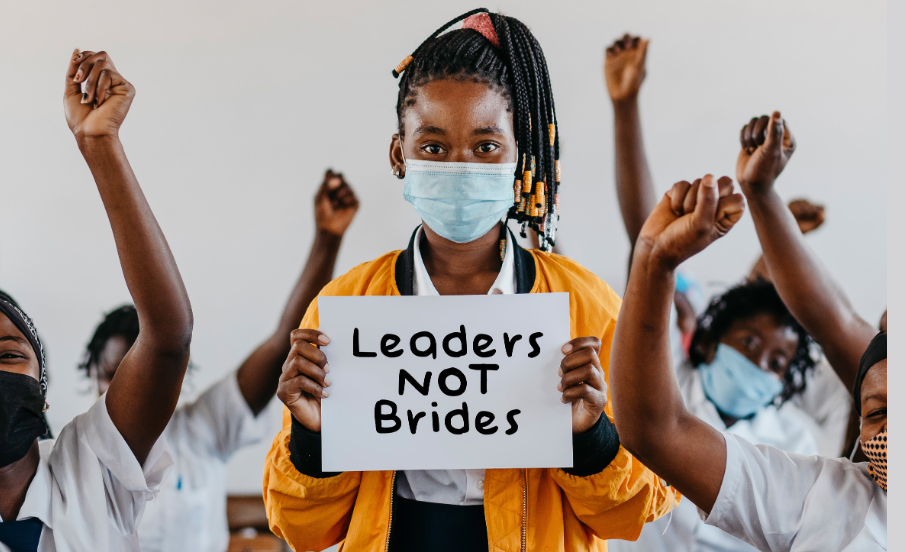Gender-Transformative Accelerator Tool of the Global Programme to End Child Marriage

"Based on the evidence that child marriage both signals and is a result of deep-seated gender inequalities and restrictive gender norms and discrimination, accentuated by poverty, the Global Programme has embraced a gender-transformative approach..."
This self-contained, process-oriented, rapid analysis and action planning tool is designed for implementers, advocates, and technical staff working on initiatives to prevent and respond to child, early, and forced marriages and unions. It was developed and field-tested by the United Nations Population Fund (UNFPA)-United Nations Children's Fund (UNICEF) Global Programme to End Child Marriage (hereafter, the "Global Programme") as part of its efforts to operationalise gender-transformative programming under Phase II (2020-2023). The aim of the tool is to facilitate interactive programmatic reflection and action planning to end child marriage.
The Global Programme explains that child marriage is driven by a mix of poverty and deeply entrenched patriarchal norms that undervalue women and girls, confine them to restricted roles in their families and communities, and undermine their ability to access and use their power and agency. Gender-transformative approaches actively examine, question, and change rigid gender norms and imbalances of power that advantage boys and men over girls and women. They aspire to tackle the root causes of gender inequality and to reshape unequal power relations, moving beyond individual self-improvement among girls and women towards redressing the power dynamics and structures that reinforce gendered inequalities. As gender is a social construction, being responsive to the systems of exclusion, insecurity, fragility, and marginalisation is equally relevant.
Gender-transformative approaches work by:
- Fostering critical examination of inequalities and gender roles, norms, and dynamics;
- Recognising and strengthening positive norms that support equality and an enabling environment; and
- Promoting the relative position of women, girls, and marginalised groups and transforming the underlying social structures, policies, and broadly held social norms that perpetuate and legitimise gender inequalities.
The GTA is aligned to the Global Programme's theory of change, which starts with girls at the centre and connects with supporting an enabling environment, including the engagement of men and boys, communities, systems, and policy investments. For instance, one level of the GTA examines whether existing adolescent girl-focused life skills programmes challenge gender relations with boys and support critical awareness and leadership competencies.
The gender-transformative accelerator (GTA) process consists of an initial priority-setting conversation followed by a 3-day workshop that focuses on the core elements of a GTA approach:
- Gender norms and stereotypes
- Adolescent girls' skills, agency, and empowerment
- Systems and services
- Addressing masculinities and engaging men and boys
- Family and community mobilisation
- Policy and structural change through institutional partnerships
The 3-day workshop reviews the concepts of gender transformation through an iterative, cyclical process that brings staff and partners together to analyse their work and develop a shared understanding of their progress, challenges, and opportunities related to gender equality, using a practical, Excel-based worksheet to provoke reflection. The expectation is that, by the close of the workshop, staff and partners will have a prioritised road map of actions to guide their work towards gender transformation.
To support this process, the Global Programme has developed a package of documents that includes:
- A 2-page brief that provides an overview of the tool and the process to use it;
- A 24-page facilitator guide to support the roll-out of the tool;
- A synthesis report of the experience and findings from selected countries using the tool, including the Global Programme's approach to gender-transformative approaches and next steps; and
- A series of country reports from countries where the tool has been implemented:
- Bangladesh
- Burkina Faso
- Ethiopia
- Ghana
- India
- Mozambique
- Niger
The GTA was piloted in 6 countries between June 2021 and May 2022. The tool was adjusted in response to feedback after each round. Throughout all 6 of the GTAs, it was clear that power relations are at the heart of gender inequalities and need further attention.
UNICEF website, November 10 2023. Image credit: © Mbuto Machili/UNFPA Mozambique
- Log in to post comments
